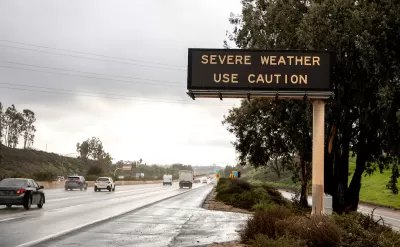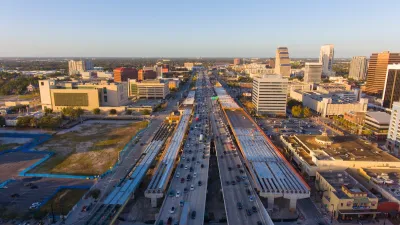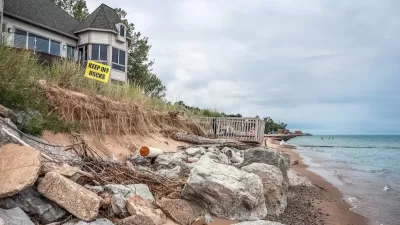In addition to displacement and public health impacts, highway expansions can also make communities less resilient to flooding and other climate-related disasters.

In a blog post for Transportation for America, Mehr Mukhtar describes how the U.S. Interstate Highway System has negatively impacted communities. “These legacies are not abstract; they have tangible effects in terms of pollution, population displacement, and environmental degradation,” Mukhtar writes.
To illustrate the point, Mukhtar uses the case of Shiloh, Alabama, a predominantly Black rural community where the expansion of a local highway led to increased flooding impacts. “Flooding has affected the structural integrity of homes and is raising alarming health concerns with residents reporting the appearance of mold. Physical damages and rising maintenance issues have forced the Shiloh community to contend with the difficult reality of investing in expensive repair projects or leaving their homes.”
Shiloh, like other communities, has been fighting for recognition and resources using tools like the National Environmental Policy Act (NEPA). In the case of Shiloh, “Their efforts culminated in an ongoing civil rights investigation from the Federal Highway Administration (FHWA) and a visit from the U.S. Secretary of Transportation Pete Buttigieg in early April of this year. But so far, no real relief has been found.”
Now, funding from programs like Reconnecting Communities must be used strategically to begin redressing historical harms. According to Mukhtar, “Funding is being moved towards emissions-increasing roadway widenings at a critical moment in the climate crisis when our dollars should be spent towards robust public and alternative transportation options. Our transportation system is steeped in environmental racism and continues to function as a driver of inequality.”
FULL STORY: There’s a climate cost to America’s freeways, and it’s not paid equally

Trump Administration Could Effectively End Housing Voucher Program
Federal officials are eyeing major cuts to the Section 8 program that helps millions of low-income households pay rent.

Planetizen Federal Action Tracker
A weekly monitor of how Trump’s orders and actions are impacting planners and planning in America.

Ken Jennings Launches Transit Web Series
The Jeopardy champ wants you to ride public transit.

California Invests Additional $5M in Electric School Buses
The state wants to electrify all of its school bus fleets by 2035.

Austin Launches $2M Homelessness Prevention Fund
A new grant program from the city’s Homeless Strategy Office will fund rental assistance and supportive services.

Alabama School Forestry Initiative Brings Trees to Schoolyards
Trees can improve physical and mental health for students and commnity members.
Urban Design for Planners 1: Software Tools
This six-course series explores essential urban design concepts using open source software and equips planners with the tools they need to participate fully in the urban design process.
Planning for Universal Design
Learn the tools for implementing Universal Design in planning regulations.
Ada County Highway District
Clanton & Associates, Inc.
Jessamine County Fiscal Court
Institute for Housing and Urban Development Studies (IHS)
City of Grandview
Harvard GSD Executive Education
Toledo-Lucas County Plan Commissions
Salt Lake City
NYU Wagner Graduate School of Public Service





























